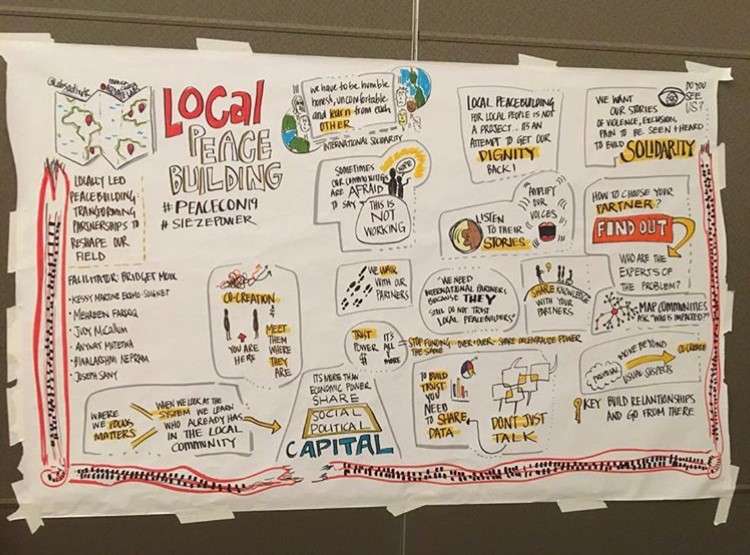
Organized by the Alliance for Peacebuilding, in partnership with the United States Institute for Peace, PeaceCon 2019 brought together peacebuilders from around the world to discuss challenges, innovative practices, and how to impact policy in the peacebuilding field. Here, DT Global’s Brianna Isaacs, a Program Associate on our Stabilization and Transition team based in Washington DC, reflects on the three-day event.
The most powerful part of PeaceCon is the ability to collaborate and learn from and with academics, practitioners, NGOs, U.S based peacebuilders, and locally led civil society groups - all of whom spent this year’s conference discussing the merits of participatory approaches to peacebuilding and the vital importance of collaboration when building lasting peace. Appropriately, this year’s PeaceCon theme was, “Seizing the Moment for Peace in a Disrupted World.” For many of attendees, including myself, the conference serves as not only a valuable opportunity for networking with my peers from around the world, but also a place where I can question our current engagement methods and learn new, cutting edge techniques and lessons learned to improve our strategies for more impact.
It was a question that was posed by panelist Kessy Martine Ekomo-Soignet, Founder of the URU (meaning “Take off” in Saigo) Youth-led Organization in the Central African Republic. As someone who has worked directly with locally led organizations both domestically and internationally, I knew that this was a conversation I wanted to engage in. This dialogue between local and international peacebuilders centered around the obstacles and opportunities in developing transformative partnerships that place local peacebuilders at the forefront. Here are some things that I took away from the session:
Throughout the session, it was clear that a major challenge faced was the ongoing power dynamics between locally led organizations and donors. Everyone coming to the table has their own agendas, but to build a powerful partnership there must be more room and support for collaboration and participatory approaches. Panelists noted the level of fear associated with speaking out about community needs because they are afraid of potentially losing funding. As Ekomo-Soignet asked, how do we begin to reshape uneven partnership dynamics and re-establish the trust necessary to empower our locally led partners?
The peacebuilding leaders on the panel were all in agreement about their motivation for their peacebuilding work: more than merely ‘jobs,’ this work served as a means for survival and a way of getting their life back. For them, it is not a project but their lives. For many activists around the world, they risk their lives and those of their families in order to participate in and run their organizations. To have sustainable partnerships, it is important be conscious of and appreciate the daily risk they make. As Binalakshmi Nepepram, Founder of the Manipur Women Gun Survivor Network India, noted, “They are fighting for their dignity.” Locally led organizations can offer increased access to local communities through honest communication and participatory approaches, often resulting in more sustainable programs that focus on the true needs of the communities.
For some locally led organizations, there are barriers to building partnerships with international organizations and donors. Often, if they do not meet a certain criterion or are unfamiliar with the standards held by international donors, otherwise worthy organizations can be passed over for funding. In doing so, we are missing out on some great community leaders who are activity working to build peace in their community. How can we move away from this standard donor model and be willing to explore new and different types of partnerships that may ultimately offer new insights to peacebuilding?
Though it requires more internal reflection and initiative, answering Kessy’s original question is not impossible. However, this panel discussion left me with more questions than answers when it comes to how to incorporate the implementation of better partnerships in the countries where we work. Ultimately, DT Global must continue to employ locally driven, participatory approaches to our work with communities to build trust, promote collaboration, and enhance resilience to build lasting peace. After being part of this year’s PeaceCon, I know that I will be more mindful and conscious of the everyday sacrifices of our partners in Somalia as I work to support the overall agenda of building peace in their community.